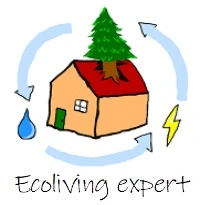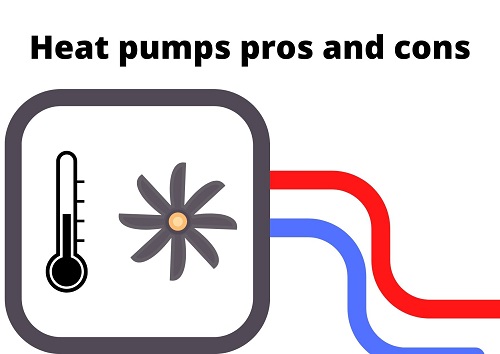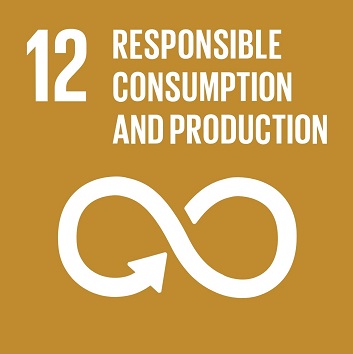Heat pumps are an excellent way of heating a building in a sustainable and energy-efficient way. There are many advantages to using a heat pump, as well as some disadvantages and things to keep in mind.
This article gives a complete overview of all the pros and cons of heat pumps.
Pros
- Heat pumps have an efficiency of 100% to 400%
- Five types of heat pumps are available
- Have low running costs
- Provide sustainable heating (no fossil fuel)
- Can produce warm air and warm water
- Have a long life-span
- Can also be used as an air conditioner
- Can be used to dehumidify the air
- Are ideal for floor and wall heating
- Are very quiet
- Provide clean air: no fuel and no exhaust gases
- Hybrid pumps can have a customizable operating system
- Water-source heat pumps can be connected to solar collectors
- Subsidies and grants are often available for heat pumps
Cons
- Low-temperature heating takes more time
- Requires good insulation
- Efficiency declines with temperature
- A heat pump is relatively expensive
- Run on electricity, which is the most expensive form of energy
- Without a connection to gas, you will need to cook on electricity
- Ground-source heat pumps require a ground area or a pond
- Ground-source heat pumps require a permit
- Heat pumps make a low-frequency droning sound
Heat pump advantages
Heat pumps have many advantages for sustainable and energy-efficient heating and cooling. Let’s dive right in.
Heat pumps are very efficient
A heat pump is always at least 100% efficient. When it is very cold outside, the heat pump solely uses its electricity to create heat. It will use the same amount of energy to run as it produces in the form of heat.
Heaters that run on electricity are always 100% efficient. There are no fuels being burned, so no exhaust is required. Therefore, no heat is lost through the exhaust, and all the energy is turned into heat.
Most of the time, a heat pump is much more efficient than 100%. A heat pump can, in fact, reach an efficiency of 400%. This happens because of the way heat pumps work. Heat pumps use a small amount of electricity to extract heat from either the air, ground, groundwater or an exhaust pipe.
In short, a heat pump works as follows
A heat pump works very similarly to a fridge. It uses a liquid that easily takes up heat from its surroundings such as the air, ground, or groundwater. This liquid boils and evaporates at temperatures well below freezing (just like when water evaporates when it boils).
The liquid is then brought into your home. There, it is turned back to liquid form by increasing pressure with the use of electricity. When the liquid is turned to liquid (condenses), it releases its stored heat. This can be used to heat water or create warm air.
On average, a ground-source heat pump is the most efficient type of heat pump. This is the case since the ground and groundwater stay relatively warm even during winter. Therefore, there is always plenty of heat to use. Air-source heat pumps can have trouble when air temperatures get very low, causing their efficiency to drop.
I wrote an in-depth article on how heat pumps work, you can find it here: What is a heat pump and how does it work? + what you really should know.
There are five heat pump options
There are five types of heat pumps available. The five types are:
- Air-source (takes energy from the air)
- Ground-source (takes energy from the ground)
- Groundwater-source (takes energy from groundwater)
- Exhaust (takes energy from heat loss such as a gas furnace exhaust)
- Hybrid (a combination of a heat pump and another heating system such as a gas boiler)
There are many options for installing a heat pump. It depends on your situation and budget which one is best for you.
An exhaust or hybrid heat pump is relatively cheap and makes sure you can switch to a fuel-based furnace when outdoor temperatures get too low.
A ground-source heat pump is the most expensive option but has high efficiency and low running costs.
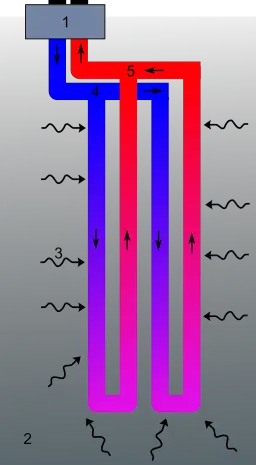
Kbentekik, CC BY-SA 3.0, via Wikimedia Commons
Heat pumps have low running costs
Since a heat pump has an efficiency between 100 and 400%, it requires only a little electricity to run. This means that your energy bill will go down because of low running costs.
The following table shows the running costs and expected savings of the different types of heat pumps.
This table is based on information provided by the Dutch website Milieucentraal.nl. Milieucentraal is an initiative by the Dutch government to provide accurate information about, among others, how to improve the sustainability of our homes. The numbers and costs in this table are therefore based on data from the Netherlands. The following is assumed:
- Electricity price: € 0,22/kWh
- Gas price: € 0,79/m³
- Gas use per year: 1.000 m³
- An averagely insulated building
- A 3-person household
| Heat pump type + (kW heat output) | Average running costs | Average yearly savings |
|---|---|---|
| Air (3 tot 12 kW) | $700 (€610) | $500* (€440) |
| Ground/or groundwater (4 tot 16 kW) | $525 (€460) | $675* (€590) |
| Exhaust (10.55 kW) | $1.100 (€970) | $215 (€190) |
| Hybrid (10.55 kW) | $1.100 (€960) | $230 (€200) |
*Savings are based on efficiency as well as not using gas anymore.
Want to know more about the costs associated with heat pumps? You can read my article: This is how much a heat pump costs (purchase costs, yearly savings, ROI). This article includes a more complete table that shows purchase costs, energy use, and the expected return on investment.
Heat pumps are a sustainable form of heating
Since a heat pump is so efficient, it uses very little energy. Therefore, energy consumption is normally reduced when switching to a heat pump.
On top of that, a heat pump does not burn any fossil fuels but runs solely on electricity. Since green electricity can be used, a heat pump can be a fully sustainable way of heating. You can, for example, install solar panels to generate the required electricity for your heat pump.
Another option is to use an energy provider that provides green, sustainably generated electricity. Using green energy greatly reduces greenhouse gas emissions.
A ground-source heat pump is the most sustainable option. The US Environmental Protection Agency (EPA) called them the most energy-efficient, environmentally clean, and cost-effective space conditioning systems available.
Additionally, a heat pump has a long lifespan. Therefore, a heat pump is an excellent option for heating sustainably and, among others, helps contribute to the sustainable development goals.
Heat pumps have a long lifespan
On average, a heat pump lasts about 15 years. With regular professional maintenance, a heat pump’s life expectancy can be expanded to 20 to 25 years.
Since heat pumps are a relatively new technology, not much data is available on their lifespan. A company called termo-plus has manufactured heat pumps for 27 years and has monitored their lifespan. They estimate that a heat pump lasts:
- More than 10 years: 99% chance
- More than 15 years: 98% chance
- More than 20 years: 95% chance
- Minimum of 25 years in optimal circumstances: 80-90% chance
The life expectancies above are based on the assumption that they are used and installed as intended. It also assumes regularly scheduled maintenance and timely repairs. (source)
A heat pump can produce warm air and warm water
A heat pump can produce your choice of warm air, warm water, or both. Regardless of the type of heat pump. This means that a heat pump can directly offer warm air to your house, or provide warm water.
This warm water can be used in your central heating system or floor heating. Additionally, it can be connected to your boiler to provide domestic hot water.
A heat pump can also be used as an air conditioner
Heat pumps that produce warm air can also be used to cool the air. A heat pump basically works like a refrigerator. It takes up heat from one place and brings it to another. When heating, it takes heat from the outside air and gives it to your indoor air. This process can be reversed to take heat from your home and bring it outside.
For this air conditioning function to work, you need a heat pump that has the option to produce warm air. A heat pump that can only produce warm water cannot be used to cool down your indoor air. That is the case because water takes more time to heat up than air. Therefore, the cooling down of the air is too slow.
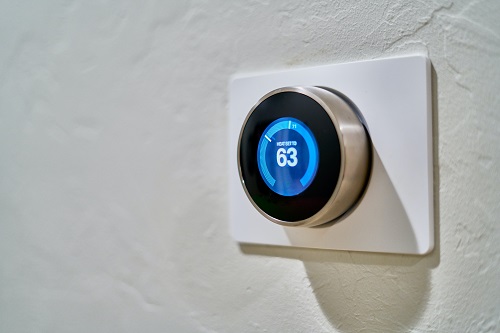
Photo by Dan LeFebvre on Unsplash
Heat pumps can be used to dehumidify the air
Heat pumps can help reduce air humidity and create a more comfortable home. When a heat pump is set to cool the indoor air, it makes the moisture in the air condense on its coils (an internal part of a heat pump). This water is then drained through a separate pipe.
Moisture in the air condenses when it cools down because air can hold less water at cold temperatures. Therefore, when coming in contact with the coils of the heat pump which extract warmth, condensation starts to form.
Some heat pumps have a ‘dry’ mode. This mode can be turned on when the desired room temperature is reached to then lower the humidity. In this mode, the heat pump continuously switches between heating and cooling to maintain temperature. (source)
Heat pumps are ideal for floor and wall heating
Floor heating and wall heating are becoming more and more popular. Luckily, a heat pump is ideal for this type of heating.
One of the main differences between a heat pump and other heating options is that heat pumps generate relatively low temperatures. Fuel-based heating systems often create very hot air or water (up to 176°F/80°C). Heat pumps only generate heat between 113 and 131°F (45 to 55°C).
This low-temperature heating is ideal for floor and wall-based heating systems. They run at lower temperatures because they have a much larger surface area than radiators. Therefore, the heat exchange is much more effective, and lower temperatures are required to heat the room.
Heat pumps are relatively quiet
Most heat pumps produce about 40 decibels (dB) of sound. That is about the noise level of a library. Anything below 40 dB is considered silent. On average, a heat pump produces between 27 and 60 decibels.
This is approximately the sound level of a fridge, which is of no surprise since a heat pump work very similarly to a fridge.

Which heat pump components make noise?
The sound that a heat pump makes comes from its moving components. An air-source heat pump generally has a fan, which makes some high-frequency whirring noise outdoors. However, some modern air-source heat pumps do not require an outdoor unit. They rely on being connected to holes in an external wall.
The indoor part of a heat pump contains a compressor. This component is responsible for some low-frequency humming.
Ground-source heat pumps are mostly situated underground and do not use a fan. Therefore, they are quieter than air-source heat pumps.
Before installing a heat pump, make sure to check local regulations on noise.
Heat pumps help improve indoor air quality
Normal fuel-burning heating systems produce some unwanted side effects. Because fuels are burned, air pollutants are released. They are normally mitigated by an exhaust, although carbon monoxide (CO) remains an issue.
Other compounds that are released when burning fuel are fine dust, carbon dioxide (CO2), and odors. Especially CO is a serious hazard that you will always need to be aware of when burning fuels.
A heat pump does not burn any fuel but instead uses electricity. Therefore, a heat pump can help improve indoor air quality compared to a fuel-burning heater. Especially when you are normally using a fireplace, a heat pump will greatly improve your indoor air quality.
You can read all about indoor air quality on this website. If you are interested, I recommend reading my article: The complete indoor air quality guide for your home.
Hybrid heat pumps can have a highly customizable operating system
A hybrid heat pump has a heat pump component that is connected to for example a gas furnace. Some hybrid heat pumps have a feature that allows them to constantly choose which heating option is used.
If your heat pump has this option, it can be set to constantly choose the best way of heating depending on your preferences.
The options are:
- Optimize for costs savings (based on efficiency and prices for electricity and gas)
- Optimize for low CO2 emissions (based on CO2 emissions of electricity vs gas)
- Optimize for efficiency (based on energy use to energy output efficiency)
These options can be customized based on your situation and preferences. Additionally, the heat pump continuously calculates its current efficiency (based on the temperature of the energy source). With this information, it chooses between the best heating option and switches when necessary. As can be seen above, this decision is based on either cost, CO2 emissions, or the current price of electricity and gas.
Water-source heat pumps can be connected to solar collectors
Ground-source heat pumps normally include two types of heat pumps: soil-based and water-based. However, if you have solar collectors (solar panels that have water-filled tubes to collect heat), you can also connect your heat pump to these panels.
If you already have solar collectors, installation is relatively cheap. You do not need to drill a hole or lay tubes as you would with a ground-source heat pump.
However, keep in mind that this system works more like an air-source heat pump. A ground (water) heat pump is more efficient since the ground (and the groundwater) does not freeze even when the air temperature is freezing. This system indirectly collects energy (heat) from the air, plus solar energy that would otherwise just warm your solar panels.
This system will still have an efficiency of 200-300% even when air temperatures drop below freezing.
On top of that, your solar panels can provide the electricity required to run your heat pump.
Subsidies and grants are often available
Depending on the country you live in, subsidies or grants may be present to stimulate the purchase of a heat pump. Governments do this to incentivize citizens to move to more sustainable forms of heating. This contributes to CO2 emission goals. For the United States, a bill is being introduced that asks for a tax credit of 20% up to $800 (source). Currently, there is a small $300 tax credit available on energy star air-source heat pumps (source).
In the UK, grants are already available for heat pumps in the renewable heat incentive. You can find out how much subsidy you can get with this calculator: https://www.gov.uk/renewable-heat-incentive-calculator.
For Canada, several grants are available for heat pumps through the greener homes grant initiative. For example, $2500 to $5000 is available for air-source heat pumps. There is even a $600 grant available for a home evaluation and expert advice. You can find out more at https://www.nrcan.gc.ca.
Heat pump disadvantages
Heat pumps differ in several ways from other heating systems. They might not be a good fit for your situation because of, for example, installation requirements of heat pumps, or if your house is poorly insulated.
They have some disadvantages as well as some things you need to keep in mind.
Low-temperature heating takes more time
Heat pumps produce low-temperature heating. For example, fuel-based heating systems often create very hot air or water (up to 176°F/80°C). Heat pumps only generate heat between 113 and 131°F (45 to 55°C).
Normally, the air (or the water in your radiator) is heated to a large temperature difference. Therefore, the heat is quite quickly exchanged and the room heats up. With relatively low temperatures, heat exchange is slower and heat loss is more impactful. Therefore, it takes longer to heat the room.
Because of this, it is advised to keep the heat pump running constantly. Including during the night or when you leave the house. You can turn the thermostat a bit lower, but it is advised to only lower it by a few degrees.
By leaving the heat pump on all the time, it runs very efficiently. It does not need to work extra hard when you want the room to be heated quickly. So this does not necessarily increase running costs.
Good insulation makes sure heat loss is minimized and heating goes as quickly as possible.
A heat pump requires good insulation
For a heat pump to function well, good insulation is required. Since heat pumps provide low-temperature heating, any heat loss should be minimized. Otherwise, the heating system cannot keep up with the heat loss.
Normally, a central heating system creates fairly hot air as it works with air or water up to 176°F/80°C. Because of this, if part of the heat is lost, the room can still heat up to the desired temperature. However, with heat pumps, the temperature output is much closer to the desired room temperature (113 and 131°F/ 45 to 55°C). Therefore, heat loss is more impactful.
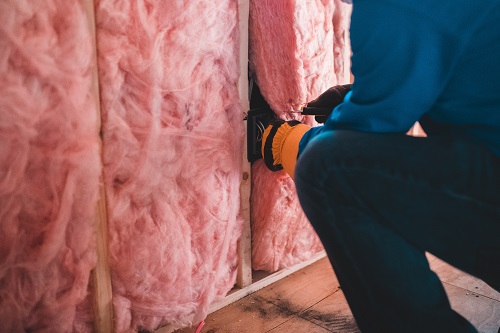
A heat pump’s efficiency declines with temperature
A heat pump works best when the desired temperature output is relatively low while the source is warm. When the temperature difference gets smaller, the heat pump works less efficiently. However, a heat pump will always be at least 100% efficient, and likely will maintain an efficiency of at least 200%.
Let’s say, for example, that the air outdoors is 15°C and the desired indoor temperature is 21°C. In this case, a heat pump does not have to work as hard, and it can reach a very high efficiency. However, when outdoor temperatures drop below freezing, the heat pump has to work much harder. In that case, it will use more electricity and its efficiency will drop.
When the temperature of the source drops below -15°C, most heat pumps will technically stop working. This means that they now basically just heat with electricity (which has an efficiency of 100%).
Ground-source heat pumps, however, extract heat from deep underground or from groundwater. This will never freeze, even when the air is freezing. Therefore, ground-source heat pumps have a much higher minimum efficiency.
A heat pump has high investment costs
A heat pump can be fairly expensive. A ground-source heat pump has the highest investment cost since it requires the drilling of holes in the ground.
Make sure to check your local subsidies and grants to help finance a heat pump.
The following table shows the expected investment costs as well as expected savings and returns on investment.
This table is based on information from a Dutch government website. It assumes the following:
- Electricity price: € 0,22/kWh
- Gas price: € 0,79/m³
- Gas use per year: 1.000 m³
| Type of heat pump (source) | Range of purchase cost (incl. installation) | Energy use per year | Heat output | Efficiency range (depends on source temperature) | Running costs | Average savings per year | Return on investment |
|---|---|---|---|---|---|---|---|
| Air | $7.400 to 16.000 (€6.500 to 14.000) | 2.800 kWh | 3 to 12 kW | 100 – 400 % | $700 (€610) | $500* (€440) | 15 – 32 years |
| Ground (or groundwater) | $9.700 to 22.000 (€8.500 to 19.500) | 2.100 kWh | 4 to 16 kW | 200 – 400 % | $525 (€460) | $675* (€590) | 14,5 – 33 years |
| Exhaust | $3.400 to 5.400 (€3.300 to 4.700) | 800 m³ gas + 1.600 kWh | 10.55 kW | 100+% | $1.100 (€970) | $215 (€190) | 17 – 25 years |
| Hybrid | $4.900 to 7.300 (€4.300 to 6.400) | 750 m³ gas + 1.600 kWh | 10.55 kW | 100+% | $1.100 (€960) | $230 (€200) | 21,5 – 32 years |
*Savings are based on efficiency as well as not using gas anymore.
For more information about this table and the costs associated with heat pumps, please read my article: This is how much a heat pump costs.
Heat pumps run on electricity, which is relatively expensive
Heat pumps are one of the most efficient heating systems. Therefore, they use relatively little energy to heat our home. Unfortunately, they run on electricity, which is the most expensive type of energy. Therefore, the yearly savings they provide can disappoint.
However, it is almost assured that you will still save on your overall energy bill with a heat pump. The savings are just relatively small compared to the savings on total energy use.
Electricity normally costs around $0,14 per kWh. Due to the efficiency of a heat pump, creating one kWh of heat will cost on average $0,047. In comparison, gas costs $0,04 per kWh.
In cold regions, a gas furnace is likely to be cheaper. In mild climates, a heat pump can work very efficiently and will be cheaper to run than a gas furnace.
If you are currently heating with an electric furnace, you will save massively on your energy use and -bill with a heat pump. If you want to know more, I recommend reading my article: Are heat pumps cheaper than electric heating?
Without a connection to gas, you will need to cook on electricity
In the calculations for cost savings, I have assumed that the gas connection will disappear. This means you can no longer cook on gas. Switching to electric cooking is not necessarily a disadvantage, but it is something you probably cannot avoid if you install a heat pump.
With a ventilation- or hybrid heat pump, you can continue to use gas. In that case, you can still cook on gas. However, there are many advantages to electric cooking. Among others, it improves the air quality in the kitchen and reduces the risk of fire and the chance of a gas leak.
Ground-source heat pumps require space and a permit
To be able to install a ground-source heat pump, you will need a bit of land to drill holes for the piping. On top of that, there needs to be enough room to allow for a large truck to come and bore the holes.
One option is to install vertical pipes that reach about 50 to 400 feet (15–122 m) deep (source). For large heat pumps that have to heat more than a single household, multiple boreholes are required. The boreholes need to be 5–6 m apart to prevent heat exchange between the boreholes. For more in-depth information about ground-source heat pumps, this article from kensaheatpumps.com is excellent.
The other option is to lay a network of horizontal pipes 3–8 feet (0.91–2.44 m) deep. However, this requires a relatively large area. according to celcoct.com: “400 to 600 feet of horizontal loops are needed for each ton of energy required to heat or cool. A mid-sized house usually requires a 3-ton unit, and so it would need space for approximately 1200 to 1800 feet of coils.”
lastly, if you have a pond or other water body nearby, you can lay pipes at the bottom.
Remember to check local regulations for whether a permit is required to install a ground-source heat pump.
Heat pumps make a low-frequency droning sound
Heat pumps make a low-frequency humming noise. This is similar to the sound a refrigerator makes. Some people are sensitive to this form of sound and may be bothered by it. Some complaints that can arise are headaches, insomnia, and a heavy feeling in the head.
Conclusion
Heat pumps really seem to be the future of heating systems. In a well-insulated house, they can easily provide all our heating needs without much energy use. Although electricity is currently quite expensive, this is very likely to change in the near future. Because of the advances being made in renewable energy sources such as solar panels and wind turbines, electricity prices are likely to drop.
Heat pumps are already a great investment, and will become even more so in the future. I highly recommend reading my article: A heat pump is worth the investment, this is why.
